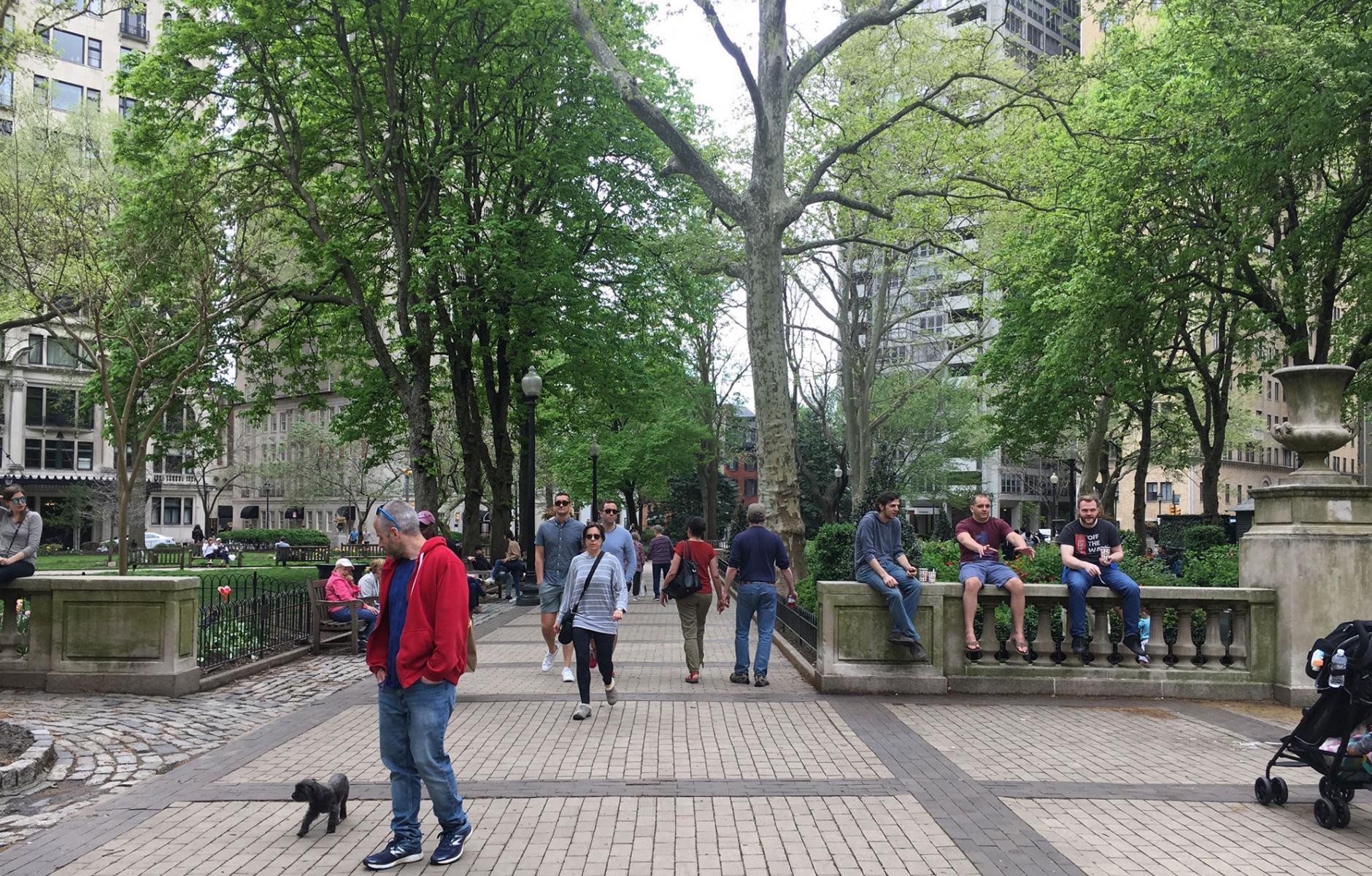
Fifty reasons to love urbanism
With apologies to Paul Simon, there must be 50 reasons to build a more walkable city. I have always believed that, although not in those exact words. Arup, a British multinational engineering and consulting firm, has published a report that neatly describes an impressive two score and ten benefits of designing walkable places.
“Intrinsic to the success of cities and the quality of life they offer is how people move around within them,” notes Cities Alive: Towards a Walking World. “In the twentieth century, planning for the city was about planning for the car. In this report we make the case for policies that encourage walking to be placed at the heart of all decisions about the built environment, as walkable cities are better cities for everyone.”
The benefits of walkability are interconnected. Maybe local businesses want more foot traffic, but when that goal is achieved, customers get more exercise. And they generate fewer carbon emissions. Meanwhile, they begin to have conversations and connect, accruing social benefits. The town or city becomes more economically competitive. The 50 benefits are supported by “quantitative and qualitative measurements.”
Some of the pluses are not well know, but they can be persuasive. Take the segment on walkability boosting the local economy. Arup notes:
According to the American Automobile Association, people spend on average $8,485 each year on their cars, but only 16 percent stays within the local economy—for licenses, taxes, registrations, repairs, and maintenance. A reduction of 15,000 vehicles in a city would translate into a $127 million increase of local budget. For instance, the economist Joe Cortright estimated that residents in Portland saved more than $1 billion by driving 20 percent less than the rest of the country, a “green dividend” that results in more disposable income to flow into local businesses.
Portland also drinks more alcohol than the typical city and is famous for its craft brewing industry. As planner Jeff Speck wrote in Walkable City, that “could be a good thing or bad thing, but, in any case, makes you glad they are driving less.” In summary, Portland has a green dividend that amounts to more than a billion dollars a year. Some of this money is spent on beer and free-range chicken, and stays in local coffers.
It’s heartening to see international traffic engineers strongly endorse walkability. For a long time, traffic engineers were like fish. Living their lives in the ocean, lakes or rivers, fish don’t know what water is. Traffic engineers spent their careers designing the public realm, but for a long time didn’t seem to get the concept. Arup notes that “As cities accommodate increased densities, developed urban patterns may struggle to supply the growing need of quality public and civic spaces. In these urbanised locations, the streets become an important extension of the public realm, typically representing the largest area of public space in a community.”I can only hope that other traffic engineers are coming to the same conclusions.
When I was a child, 50 percent of children walked to school in the US. Now, that number is down to 15 percent. It is not surprising, that, as Arup reports, obesity and lack of regular physical exercise are big problems. Redesigning the physical environment so that more children could walk to school would have multiple benefits throughout society.
Arup divides walkability benefits into categories: Social, Economic, Environmental, and Political. Each of these areas is substantial and deserves detailed consideration. I plan to write more about these four categories in future columns.
Arup does not stop at identifying benefits, but closes with a list of 80 examples where cities have implemented policies and programs. “Moving towards a walking world requires actions. These actions concern visions and strategies, safe and efficient transport systems, creating liveable environments, a sense of place and community and smart and responsive cities. The practicality of these actions is illustrated by a series of 80 case studies from across the world.”
Download Cities Alive (16 mb).




